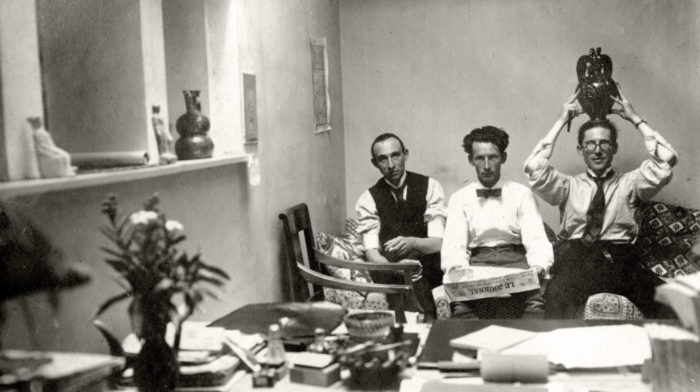As a young architect in search of inspiration, Charles Édouard Jeanneret-Gris (Swiss, 1887 – 1965) traveled extensively throughout Europe and the Mediterranean.[i] Early in the summer of 1911, Jeanneret (today better known by his adopted name, “Le Corbusier”), then twenty-four years old, set out on a five-month journey that would take him through the Balkans, Turkey, Greece, and Italy. He headed southeast from Munich, where he had been employed in the studio of the influential German architect Peter Behrens (1868 – 1940). In Serbia, Le Corbusier found himself delighted by local ceramics—he eagerly sketched their forms and purchased several examples to keep as souvenirs.[ii]
One of his favorite vases appears in this drawing. The earthenware object, today preserved as part of Le Corbusier’s personal collection at the Fondation Le Corbusier in Paris, belongs to a class of folk art he described as “peasant vases, pottery of the people.”[iii] To friends back home, he wrote rapturously of the vases’ ability to “gently transport,” through their “fairytale glamour.”[iv] In a photograph from 1919 (also kept at the FLC), Le Corbusier—still young—playfully rests the Serbian vase upon his head. The image was captured at La Maison Blanche, a house designed by Le Corbusier for his parents upon his return home to Switzerland in 1912.[v]

Le Corbusier with his Serbian Vase on his head, with Albert Jeanneret and Amédé Ozenfant at the Maison Blanche, La Chaux-de-Fonds, August 1919. @Fondation Le Corbusier, Paris
Cooper Hewitt’s drawing, carried out in graphite and reddish-brown crayon, bears an inscription explaining that it was executed in September 1926, when the architect was in residence at the Villa Le Lac, a family property he designed in 1923. Though more than a dozen years had passed since Le Corbusier’s “Journey to the East,” the vase still captivated him.[vi] The drawing therefore serves not only as a record of the object itself, but also of Le Corbusier’s continued interest in its exotic form. The sheet entered the Cooper Hewitt collection (together with six other drawings by the architect) only a decade after it was made.
Dr. Julia Siemon is Assistant Curator of Drawings, Prints & Graphic Design at Cooper Hewitt, Smithsonian Design Museum
[i] Sketches from Jeanneret’s early travels, dating 1907 – 1911, are published in Jacob Brillhart, Voyage Le Corbusier: Drawing on the Road (W.W. Norton, 2016).
[ii] Le Corbusier Before Le Corbusier: Applied Arts, Architecture, Painting and Photography, 1907 – 1922, exh. cat., Langmatt Museum, Baden, Switzerland (March 30 – June 30, 2002), and The Bard Graduate Center for Studies in the Decorative Arts, Design, and Culture, New York (November 22, 2002 – February 23, 2003), p. 250.
[iii] Ibid. Corbusier’s Balkan vases are described by Mirjana Lozanovska as “functional water-drinking urns” intended be taken into the field to keep water cool, their slender necks intended to prevent bugs from entering. Mirjana Lozanovska, “Europe, Le Corbusier and the Balkans,” ABE Journal [online], 11 | 2017, mis en ligne le 05 octobre 2017, consulté le 11 novembre 2019. URL : http://journals.openedition.org/abe/3509 ; DOI : 10.4000/abe.3509
[iv] Ibid.
[v] An exhibition of photographs and objects documenting Le Corbusier’s private collection was recently on view at the Pavillon Le Corbusier, Zürich. Called Mon Univers: Le Corbusier’s World of Objects, the exhibition (May 11 – November 11, 2019) is accompanied by a catalogue.
[vi] Le Corbusier’s diary from the 1911 trip, which he called his “Voyage d’Orient,” is available in English translation by Ivan Žaknić as Journey to the East (MIT Press, 1989).
